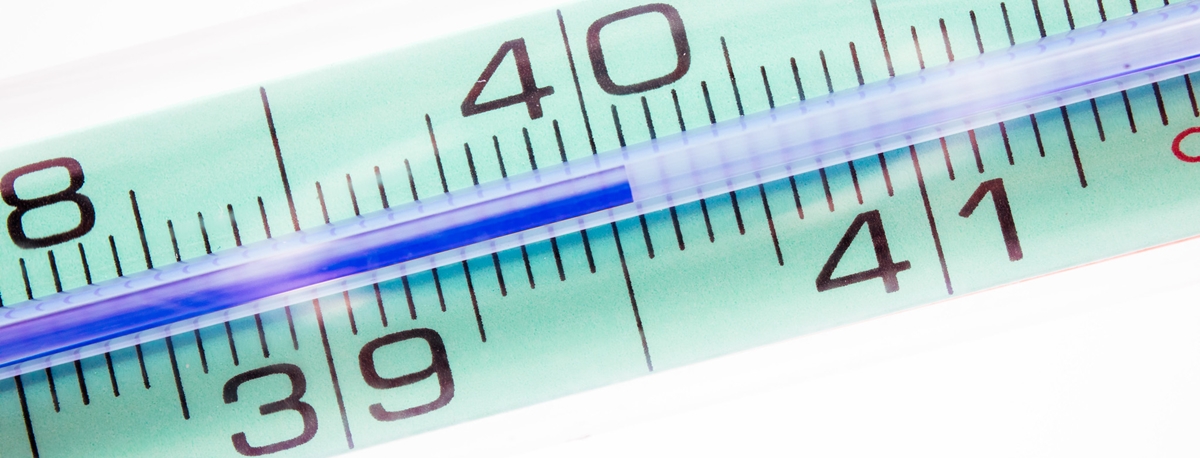Human beings are warm-blooded animals. Their bodily functions depend on their body temperature, and as the optimal, many people consider 37 degrees of Celsius (or 98.6 degrees Fahrenheit). Of course, 37 degrees is not a fixed number, and many people live perfectly normally with their temperature slightly below or above that number.
Slight variations are acceptable, but if the temperature goes up for a degree or two, we say that person has a fever. On its own, fever is not an illness, but a symptom than can be associated with many medical conditions. It simply represents the fact that there is some kind of infection in the body, and your body is trying to get rid of it.

Chills, on the other hand, are individual sensations of coldness and shivering of the whole body. When a person is exposed to cold weather it’s perfectly normal to shiver, because muscles start to contract against your will, just to make some heat and warm you up to your normal temperature.
The same thing happens during the fever, or at the beginning of some infections. In that case, chills can last several minutes or even an hour.
What Causes Chills and Fever
Chills can be caused by many different conditions. Fever, common cold, and flu are some of the most common causes, but various bacterial and viral infections, such as infections of the urinary tract, pelvis, kidneys, pneumonia, or meningitis may also have chills as the symptom. Malaria and AIDS can also provoke chills in a person suffering from these conditions.
Your temperature may also rise because of similar reasons. Infections can always make a person experience high temperatures, especially children. Sometimes, having a fever may also mean that your immune system is able to fight the infection successfully.
Extremely high fever, recurrent or fever that lasts for a long period of time, however, indicates a more serious medical condition and shouldn’t be taken lightly.
Ear infections and gastrointestinal problems can also raise your body temperature significantly. Babies usually rub their ears when there’s something wrong, and when you notice that symptom it’s time to take your baby to see the doctor.
Arthritis patients and people experiencing sunstroke can also have a high fever, as well as some sunburn patients.
- The cognitive interviews clarified and validated the content of the final 21-item FAST. Fifty-six patients completed the FAST from two to 133 times during routine vital sign assessment, yielding 1,699 temperature time points. Thirty-four percent of the patients (N?=?19) experienced fever at one or more time points, with a total of 125 febrile time points.
- Kuder-Richardson 20 (KR-20) reliability of the FAST was 0.70. Four nonspecific symptom categories, Tired or Run-Down (12), Sleepy (13), Weak or Lacking Energy (11), and Thirsty (9) were among the most frequently reported symptoms in all participants.
- Using Generalized Estimating Equations (GEE), the odds of reporting eight symptoms, Warm (4), Sweating (5), Thirsty (9), General Body Aches (10), Weak or Lacking Energy (11), Tired or Run Down (12) and Difficulty Breathing (17), were increased when patients had a fever (Fever Now), compared to the two other subgroups—patients who had a fever, but not at that particular time point, (Fever Not Now) and patients who never had a fever (Fever Never).
- Many, but not all, of the comparisons were significant in both groups.
When to Call the Doctor
When the fever is not the only symptom, and you experience breathing problems, vomiting, stiff neck, irritability, or confusion it might be a good time to consult a doctor. Normally, the fever won’t last for more than 5 days in a row, but if that happens, you should see the doctor, also.
For very young children, up to 3 months old, it’s very important to remember that every temperature above 101 degrees Fahrenheit (38.3 degrees Celsius) should be taken care of by a medical professional.
In children up to 1 year, always watch for persistent temperature that lasts more than 24 hours and call the doctor if that happens.

















Your thoughts on this
Loading...